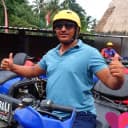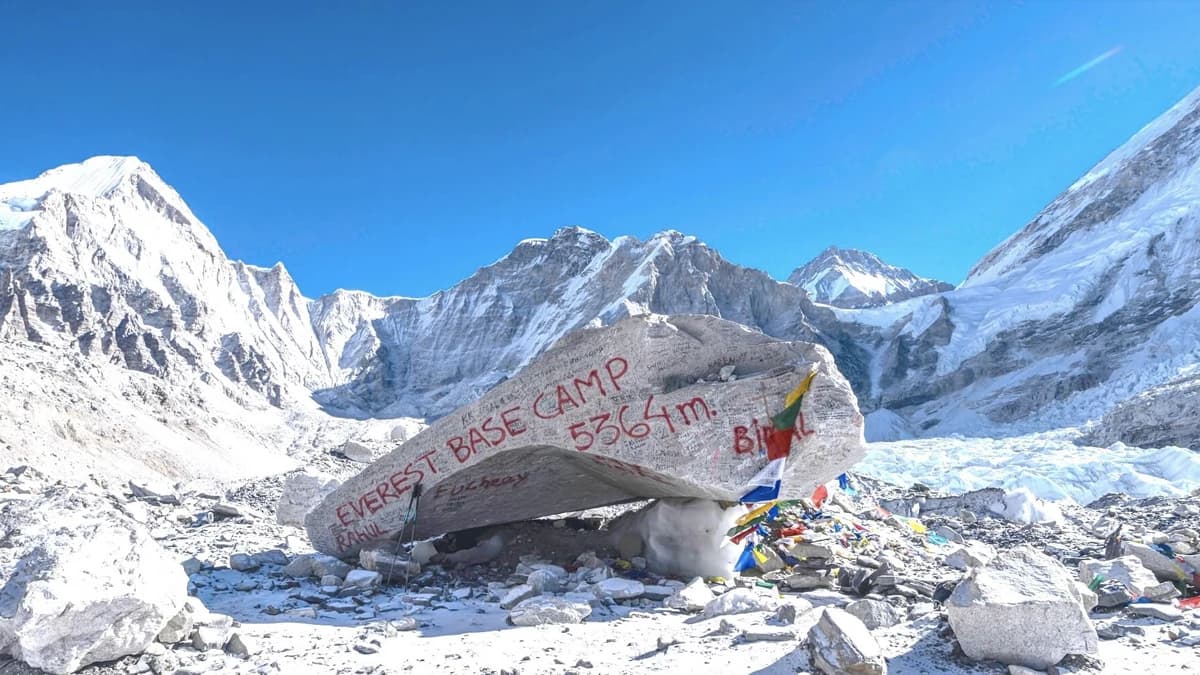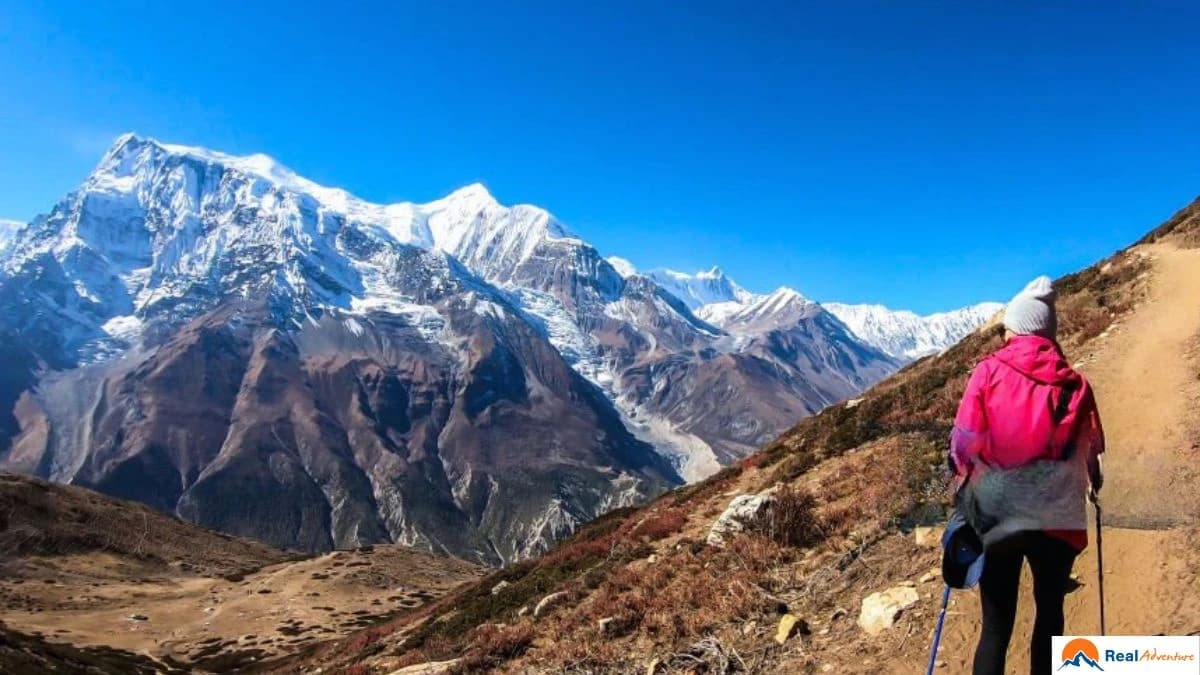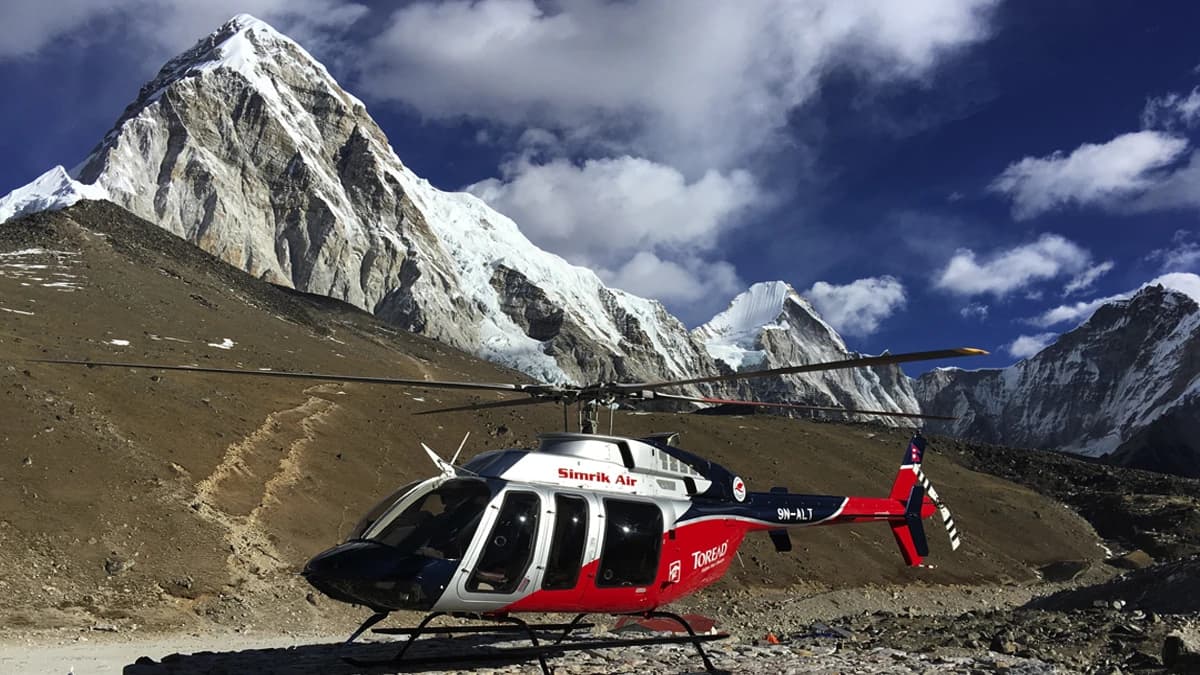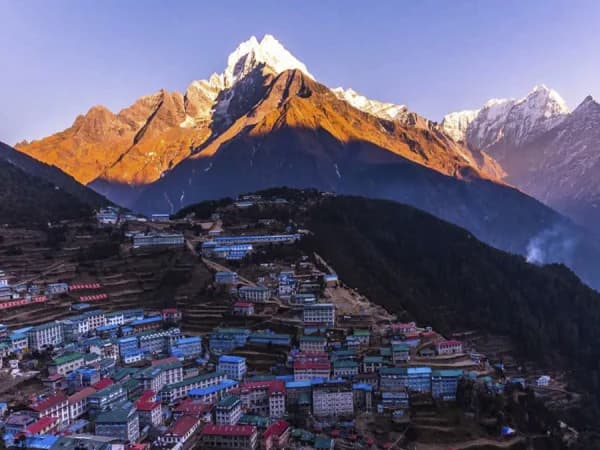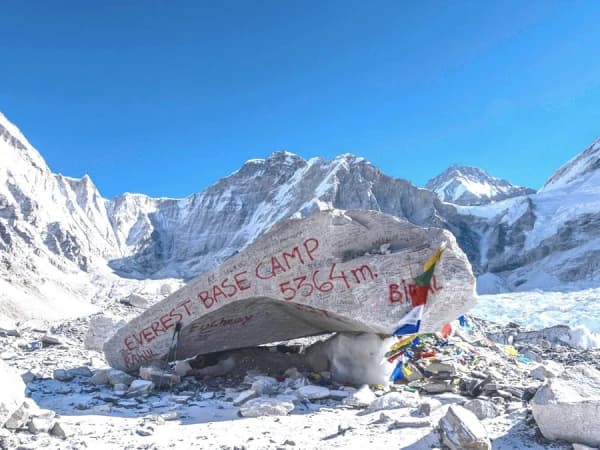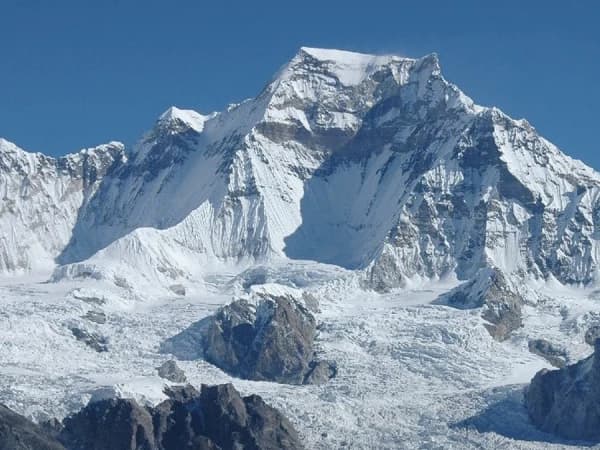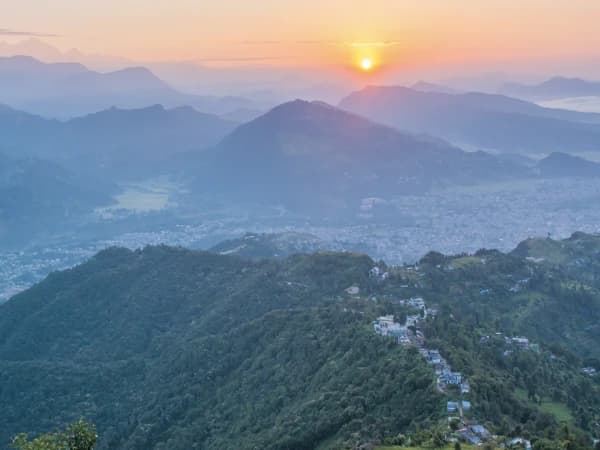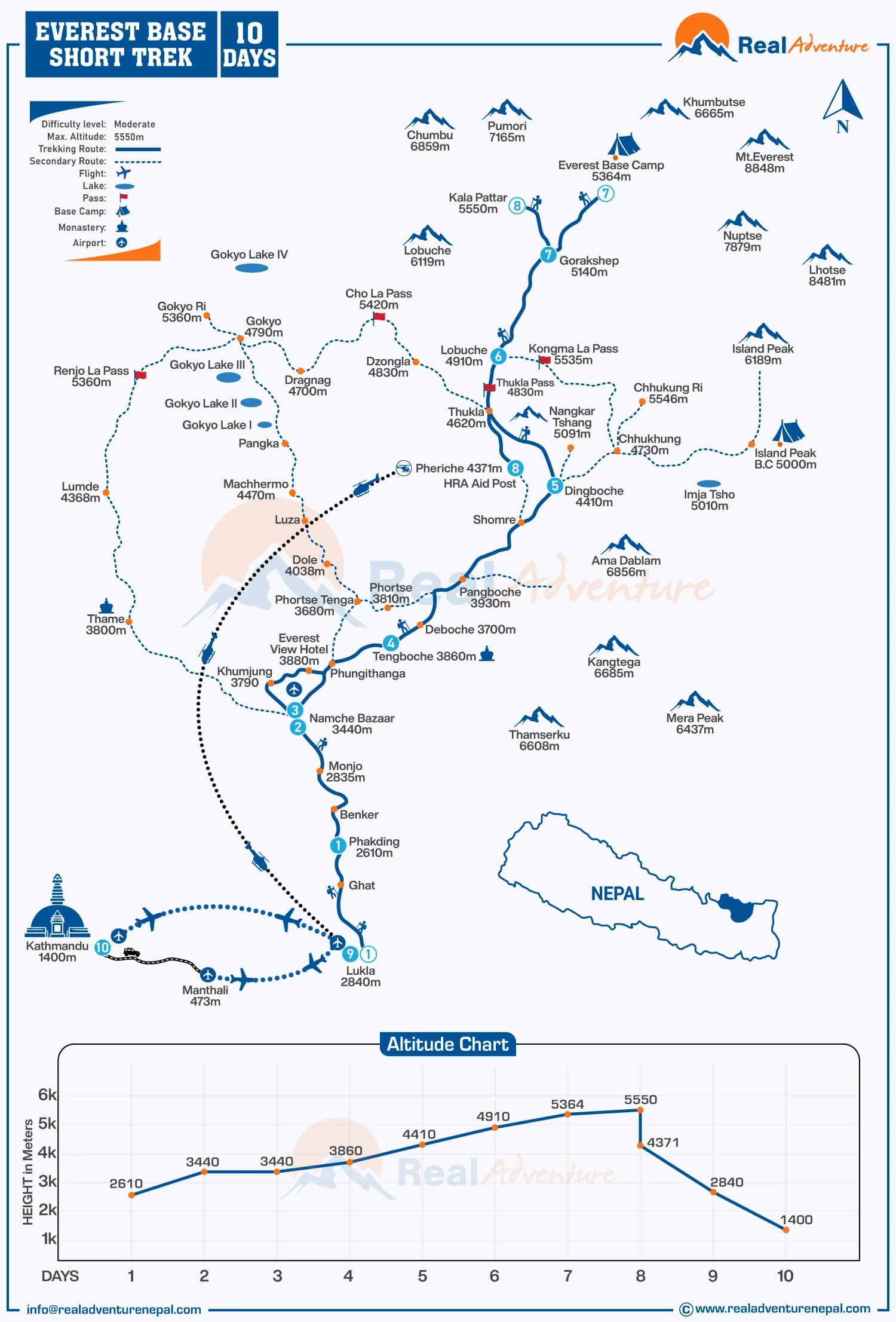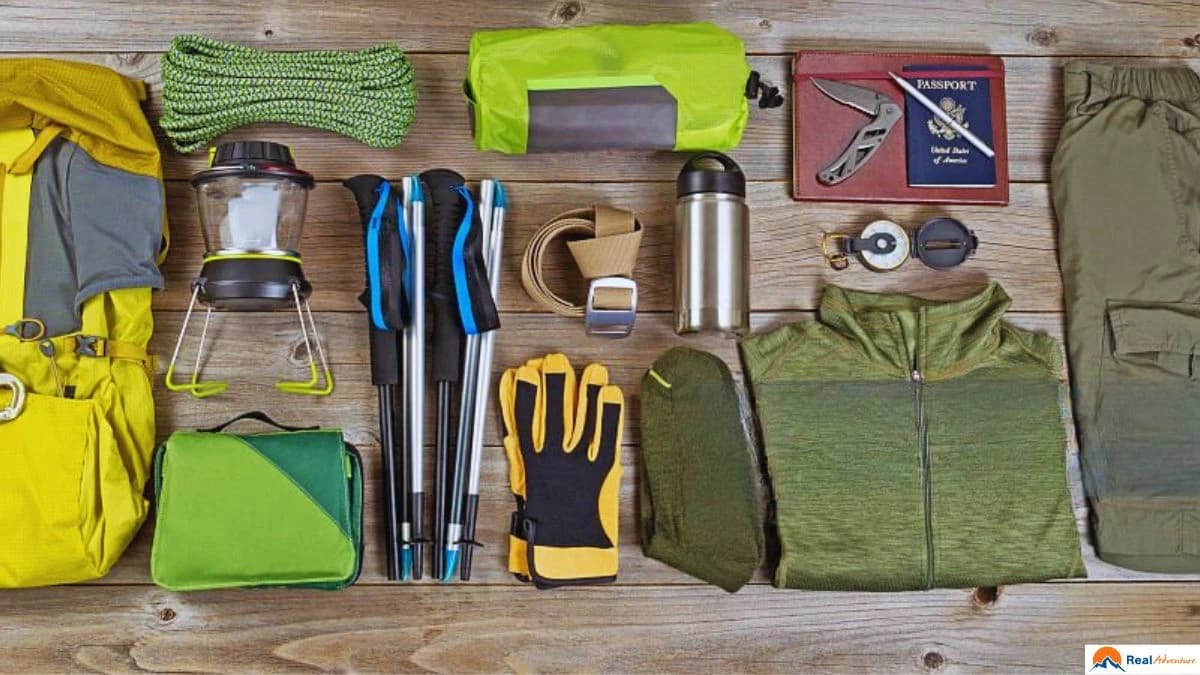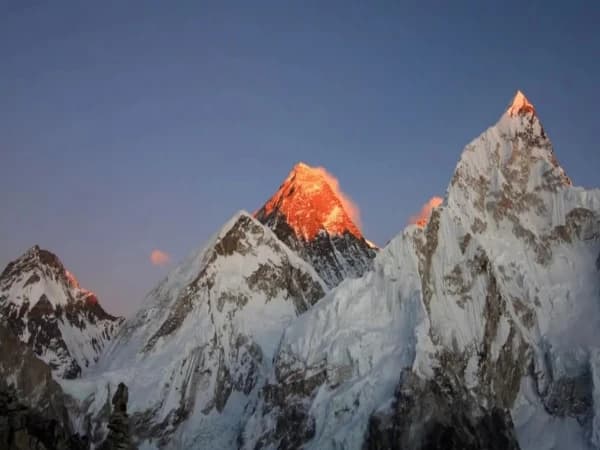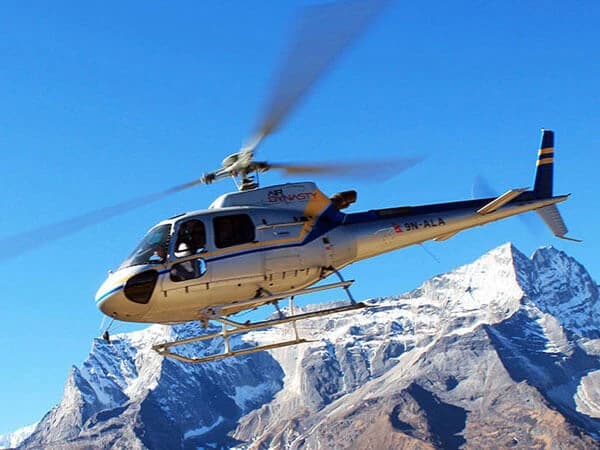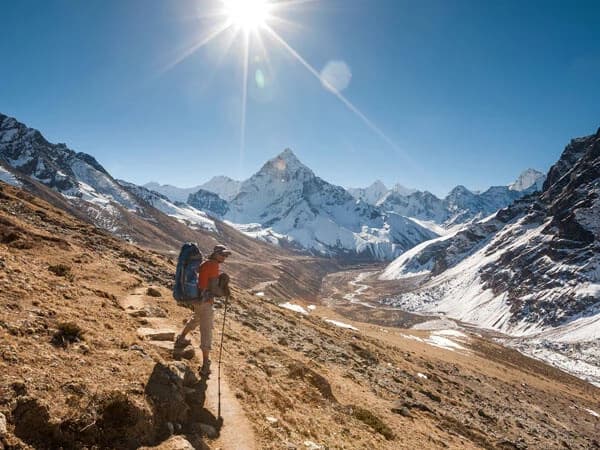Everest Base Camp Short Trek with Heli Fligh to Lukla from Pheriche - 10 Days Trek
The Everest Base Camp 10 days short Trek is one of the most sought-after trekking packages in Nepal, designed for adventure lovers who want to experience the Himalayas in a limited time without missing the region’s most iconic highlights. This 10 Days Everest Base Camp Trek is perfect for those on a tight schedule yet determined to stand at the foot of the world’s highest mountain. Offering breathtaking Himalayan panoramas, rich Sherpa culture, and thrilling alpine trails, this condensed itinerary delivers the full Everest trekking experience in less time.
This short Everest trek in Nepal leads you deep into the heart of the Khumbu region, home to the legendary Sherpa people and their centuries-old traditions. You’ll follow scenic mountain trails past vibrant rhododendron forests, roaring glacial rivers, and swaying suspension bridges adorned with prayer flags. En route, you’ll explore famous Sherpa settlements like Namche Bazaar and Tengboche, each offering unique insights into Himalayan life. Despite its compact duration, the trek includes all the must-see landmarks—reaching Everest Base Camp (5,364m) and witnessing the awe-inspiring sunrise from Kala Patthar (5,545m), the most famous viewpoint in the Everest region.
The key to the Everest Base Camp Short Trek’s popularity is its efficient route design. Built for optimal acclimatization and reduced trail repetition, it often incorporates a return helicopter flight from Everest or rapid descent, saving several days compared to the classic trek. This allows trekkers to focus on the adventure’s best parts—majestic views of Everest, Lhotse, Nuptse, Ama Dablam, and surrounding peaks—while avoiding long backtracking days.
Affordability is another advantage. While the experience is premium, the Everest Base Camp Short Trek cost is highly reasonable compared to longer high-altitude expeditions. It’s accessible to fit first-time trekkers as well as seasoned hikers seeking a faster yet equally rewarding journey.
Beyond the mountain vistas, this trek immerses you in the spiritual essence of the Himalayas. You’ll visit ancient Buddhist monasteries, spin prayer wheels, pass mani walls, and enjoy the warmth of Sherpa hospitality. Sampling traditional Himalayan cuisine and learning about the Sherpa way of life enriches the adventure far beyond the physical challenge.
Every section of the Everest Base Camp Trek route offers unforgettable scenery—glacial valleys, alpine meadows, icefalls, and rugged high passes. The Khumbu Icefall and Tengboche Monastery provide moments of serenity and wonder amid the grandeur of towering peaks.
If you dream of ticking Everest Base Camp trekking in Nepal off your bucket list but have limited time, the 10 Days Short Everest Base Camp Trek is your best choice. Combining breathtaking mountain views, cultural richness, and a smartly crafted itinerary, it’s a compact Himalayan adventure that delivers a lifetime of memories.
Trip Highlights

The highlights of Everest Base Camp Trek are:
- Quick Journey to Everest Base Camp: This itinerary reaches the iconic EBC in just 10 days, making it perfect for those with limited time.
- Breathtaking Mountain Views: Lhotse, Nuptse, and the majestic Ama Dablam are some of Mount Everest's most beautiful mountain vistas.
- Guided Route with Trek Map: Follow the scenic trails in the EBC Trek map for an unforgettable adventure.
- Explore Namche Bazaar: Immerse in the dynamic Sherpa culture and bustling market town of Namche Bazaar.
- Visit Tengboche Monastery: Enjoy its serenity amidst breathtaking views of the mountains.
- Scenic Trails Through Nature: Trek through forests, suspension bridges, and charming villages en route to your destination.
- Immerse in Sherpa Culture: Get acquainted with the distinctive traditions and savor the warmth of Sherpa hospitality.
- Thrilling Lukla Flights: Fly to and from Lukla, one of the world's most thrilling airstrips with spectacular views of the Himalayas.
Why Best Everest Base Camp Short Trek with Heli Flight to Lukla from Pheriche – 10 Days?
The Everest Base Camp Short Trek with Heli Flight to Lukla from Pheriche – 10 Days is one of the best high-altitude adventures in Nepal, created for trekkers who want the full Everest experience in a limited timeframe. This popular 10 Days Everest Base Camp Trek is designed for those dreaming of standing at the foot of the world’s highest mountain without committing to long trekking days. It delivers breathtaking Himalayan views, rich Sherpa culture, and the iconic Everest Base Camp trail in a fast, efficient, and memorable way.
This short Everest trek in Nepal takes you into the heart of the Khumbu region, where the legendary Sherpa people, ancient monasteries, prayer walls, and dramatic landscapes create a truly inspiring journey. Trekkers follow scenic mountain paths through rhododendron forests, across suspension bridges, and along glacial valleys while exploring famous Himalayan villages like Namche Bazaar and Tengboche. Even with its shorter duration, the trek includes the two biggest highlights: reaching Everest Base Camp (5,364m) and enjoying sunrise from Kala Patthar (5,545m), the best viewpoint of Mount Everest.
What makes this trek truly special is the helicopter flight from Pheriche to Lukla, which saves several days of descent. This smart route design makes the journey faster, more comfortable, and less physically demanding while still offering all the key experiences of the classic Everest trail. The heli flight also gives you a stunning aerial view of the Himalayan range, making the return journey exciting and unforgettable.
The Everest Base Camp Short Trek cost is also more affordable than many longer expeditions, making it perfect for fit beginners, families, and experienced trekkers who want a short yet rewarding adventure. Throughout the trip, you’ll enjoy the spiritual essence of the Himalayas—Buddhist monasteries, prayer wheels, mani walls, and Sherpa hospitality that add deep cultural meaning to the trek.
Every part of the Everest Base Camp Trek route is filled with incredible scenery: icefalls, alpine meadows, glacier valleys, and views of Everest, Lhotse, Nuptse, and Ama Dablam. If you have limited time but still want a complete Himalayan trekking experience, this 10 Days Everest Base Camp Short Trek with Helicopter Return is the best and most efficient way to fulfill your Everest dream.

